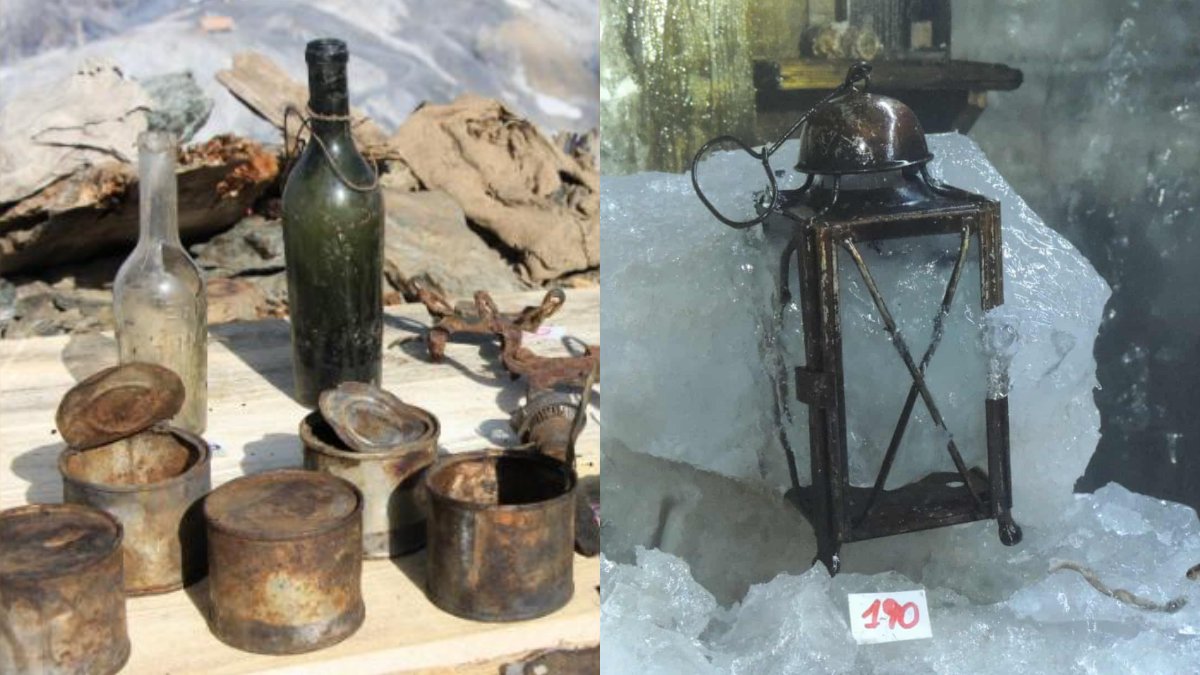The glacier in Northern Italy has melted, revealing a cave that sheltered 20 Austrian soldiers
A glacier set amongst Mount Scorluzzo in Northern Italy has melted away to reveal a treasure trove of historic, WWI secrets. The cave, located along the Alpine front, close to Stelvio Pass – a popular cyclist destination in the municipality of Bormio – is believed to have acted as a shelter for at least 20 Austrian soldiers.
The cave was initially discovered by researchers back in 2017, when the surrounding glacial area had first melted away, with a collection having now been assembled and set to be displayed in the local Bormio museum in 2022. Among the items found, there is everything from food, dishes and jackets, to straw mattresses, coins and helmets; ammunition, lanterns and even newspapers.
The cave itself is being linked to the wider Scorluzzo barracks, which were initially found in 2015, almost a hundred years on from World War One. Italy’s military past includes a very unique and specific chapter, dubbed by historians as ‘The White War‘.
 During WWI, the Italian had to fight the likes of Germany and the other central powers across the Alps of the Lombardy region of Italy and the Dolomites in Trentino Alto-Adige, which borders Switzerland and Austria. Due to the altitude of the snow-capped peaks and sub-zero conditions, it became known as The White War and saw artefacts such as these left perfectly preserved.
During WWI, the Italian had to fight the likes of Germany and the other central powers across the Alps of the Lombardy region of Italy and the Dolomites in Trentino Alto-Adige, which borders Switzerland and Austria. Due to the altitude of the snow-capped peaks and sub-zero conditions, it became known as The White War and saw artefacts such as these left perfectly preserved.
Speaking to CNN, historian Stefano Morosini said that the items discovered illustrated a “very poor daily life” of the soldiers, who were trying to survive in “extreme environmental conditions”, as temperatures could drop to -40 degrees Celsius among the mountain ranges.
Morosini reiterated the difficulty of being deployed in these regions, as not only did they have to “fight against the snow or the avalanches, but also fight against the enemy”. He went on to describe these “artefacts are a representation, like a time machine” that takes you back to the extraordinary circumstances of WWI.
As he pointed out, more items appear every summer as the glacier keeps melting and the exhibition will continue to add these last vestiges of a world and a way of life gone by. The cave itself will become “a sort of open-air museum”, while the remnants have become part of a collection. The museum released this statement on the discovery:
“The findings in the cave on Mount Scorluzzo give us, after over a hundred years, a slice of life at over 3,000 meters above sea level, where the time stopped on November 3, 1918 when the last Austrian soldier closed the door and rushed downhill.”
The bodies of two soldier who inhabited the cave were found five years ago, according to Morosini, with their documents and remains given to their families. However, they are by no means the first; last year, in September, the body of a soldier wrapped in the Italian flag was found in the Adamello glacier atop of the Cornicciolo di Presena in Trentino.
The shelter itself sits just below the peak of Mount Scorluzzo at a total of 3,094 meters high (10,151 feet), with 60 cubic meters of ice being chipped away since July 2017 and plenty more to go until everything that is inside can be fully uncovered.








































